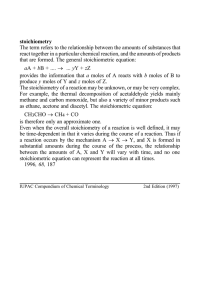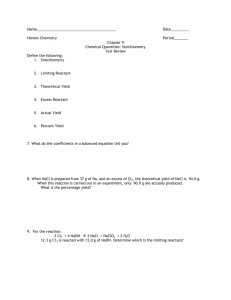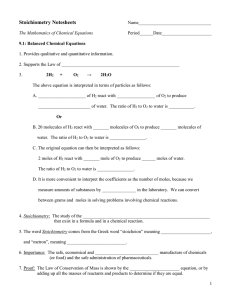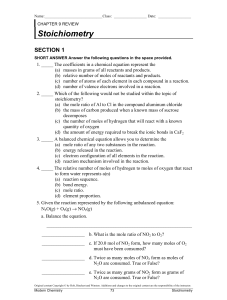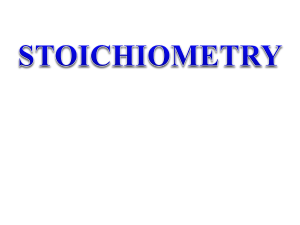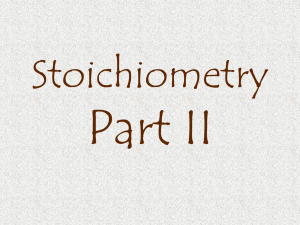CHAPTER 9 REVIEW
advertisement
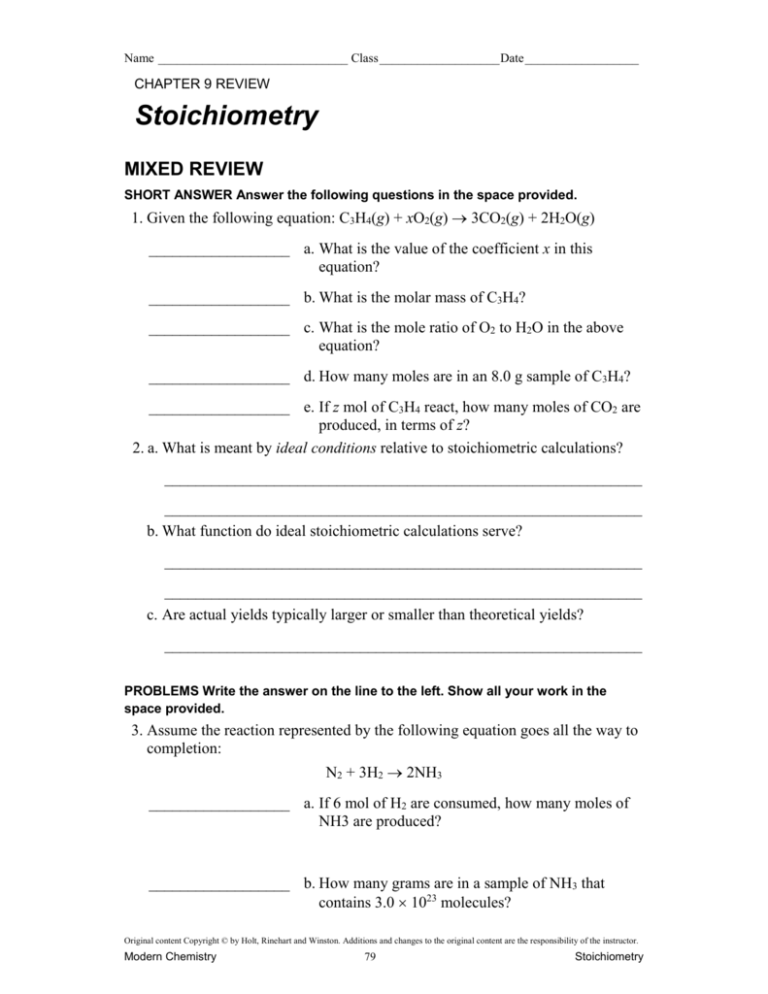
Name ______________________________ Class ___________________ Date __________________ CHAPTER 9 REVIEW Stoichiometry MIXED REVIEW SHORT ANSWER Answer the following questions in the space provided. 1. Given the following equation: C3H4(g) + xO2(g) 3CO2(g) + 2H2O(g) __________________ a. What is the value of the coefficient x in this equation? __________________ b. What is the molar mass of C3H4? __________________ c. What is the mole ratio of O2 to H2O in the above equation? __________________ d. How many moles are in an 8.0 g sample of C3H4? __________________ e. If z mol of C3H4 react, how many moles of CO2 are produced, in terms of z? 2. a. What is meant by ideal conditions relative to stoichiometric calculations? _____________________________________________________________ _____________________________________________________________ b. What function do ideal stoichiometric calculations serve? _____________________________________________________________ _____________________________________________________________ c. Are actual yields typically larger or smaller than theoretical yields? _____________________________________________________________ PROBLEMS Write the answer on the line to the left. Show all your work in the space provided. 3. Assume the reaction represented by the following equation goes all the way to completion: N2 + 3H2 2NH3 __________________ a. If 6 mol of H2 are consumed, how many moles of NH3 are produced? __________________ b. How many grams are in a sample of NH3 that contains 3.0 1023 molecules? Original content Copyright © by Holt, Rinehart and Winston. Additions and changes to the original content are the responsibility of the instructor. Modern Chemistry 79 Stoichiometry Name ______________________________ Class ___________________ Date __________________ MIXED REVIEW continued c. If 0.1 mol of N2 combine with H2, what must be true about the quantity of H2 for N2 to be the limiting reactant? _____________________________________________________________ _____________________________________________________________ 4. __________________ If a reaction’s theoretical yield is 8.0 g and the actual yield is 6.0 g, what is the percentage yield? 5. Joseph Priestley generated oxygen gas by strongly heating mercury(II) oxide according to the following equation: 2HgO(s) 2Hg(l) + O2(g) __________________ a. If 15.0 g HgO decompose, how many moles of HgO does this represent? __________________ b. How many moles of O2 are theoretically produced? __________________ c. How many grams of O2 is this? __________________ d. If the density of O2 gas is 1.41 g/L, how many liters of O2 are produced? __________________ e. If the percentage yield is 95.0%, how many grams of O2 are actually collected? Original content Copyright © by Holt, Rinehart and Winston. Additions and changes to the original content are the responsibility of the instructor. modern chemistry 80 stoichiometry
